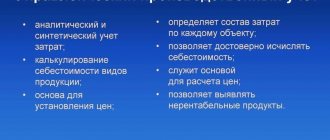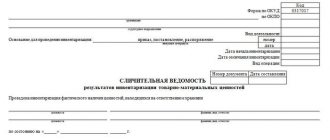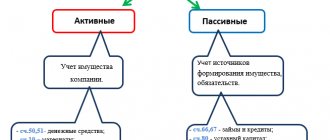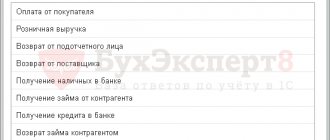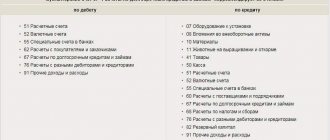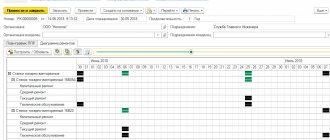Account 11 is used to reflect information about animals, beasts, fish, poultry, and bees that are being fattened and are not included in the main herd.
Account 11 “Animals for growing and fattening”, as a rule, is used by agricultural producers to summarize information about animals that do not belong to adult productive livestock. The chart of accounts accounts for the account. 11 to production inventories, that is, to the current assets of the company. Unlike the account. 01, which takes into account the main adult livestock, count. 11 is, in fact, an account reflecting information about the agricultural producer’s work in progress.
Attention! Account 11 is not intended for accounting for adult large livestock, but can be used for all small animals (rabbits, bees, poultry), since the transfer from fattening to the main herd seems to be too labor-intensive, therefore, to simplify accounting, they are taken into account on the account. eleven.
Account 11 is active, as it reflects information about the assets (property) of the company.
Accounting is carried out by the number of heads, their weight and cost.
The costs of growing and fattening are written off from Kt. 11 on account 20 or count. 29 depending on the accounting policy.
Account 11. Animals for growing and fattening
The costs of raising or fattening these animals are taken into account in account 20 “Main production” or 29 “Service production and farms”.
(as amended by the resolution of the Ministry of Finance dated December 20, 2012 N 77)
The cost of animals purchased from other persons is reflected in the debit of account 11 “Animals for growing and fattening” and the credit of account 60 “Settlements with suppliers and contractors” and other accounts.
The cost of animals culled from the main herd is reflected in the debit of account 11 “Animals for growing and fattening” and the credit of account 01 “Fixed assets”.
The cost of young animals received as offspring is reflected in the debit of account 11 “Animals for growing and fattening” and the credit of the account, which records the costs of maintaining the animals from which the offspring was obtained.
The cost of young animals transferred to the main herd is reflected in the debit of account 08 “Investments in long-term assets” and the credit of account 11 “Animals for growing and fattening” and at the same time in the debit of account 01 “Fixed assets” and the credit of account 08 “Investments in long-term assets "
When animals are disposed of (including the delivery of animals culled from the main herd to procurement organizations), their cost is reflected in the debit of account 90 “Income and expenses from current activities” and the credit of account 11 “Animals for growing and fattening”.
(as amended by the resolution of the Ministry of Finance dated December 20, 2012 N 77)
The cost of dead and forcedly slaughtered animals, except for those killed or slaughtered due to epizootics or natural disasters, is reflected in the debit of account 94 “Shortages and losses from damage to property” and the credit of account 11 “Animals for growing and fattening”. The cost of animals that died or were slaughtered due to epizootics or natural disasters is reflected in the debit of account 91 “Other income and expenses” and the credit of account 11 “Animals for growing and fattening”.
Analytical accounting for account 11 “Animals for growing and fattening” is carried out by place of keeping animals, species, age groups, gender, etc.
Account 11 “Animals for growing and fattening” has the following sub-accounts:
Account 11 “Animals for growing and fattening” corresponds with the accounts:
Other Section 2 Accounts
Account 10. MaterialsAccount 11. Animals for growing and fatteningAccount 14. Reserves for reducing the cost of inventoriesAccount 15. Procurement and purchase of materialsAccount 16. Variance in the cost of materialsAccount 18. Value added tax on purchased goods, works, services
We form a herd using young animals
An agricultural organization can form a herd of cattle not only by purchasing adult animals, but also through the offspring of livestock owned by the organization, or by raising purchased young stock. Let us consider the features of documenting and accounting for such operations.
We buy young stock First of all, let’s analyze the situation related to the acquisition of young stock by agricultural organizations from third-party companies or individuals. WE COMPLETE THE NECESSARY DOCUMENTS In the event that young animals are purchased from breeding plants and other organizations, contracts, waybills, invoices, acceptance certificates, veterinary, breeding certificates and other documents are received from the supplier. If young animals are purchased from the population, then in addition to the purchase and sale agreement, an acceptance and settlement sheet is drawn up for animals accepted from the population (form No. SP-40). This document is used both for the receipt of animals and for settlements with the donor (in the case of accepting animals for further rearing in the organization). And in cases of transit operations (delivery of accepted animals to a procurement point), this statement is also used for settlements with the procurement point for animals handed over to it. In the first case, the statement is filled out in two copies, in the second - in three. FEATURES IN ACCOUNTING Transactions related to the purchase of young animals are reflected in the debit of account 11 in correspondence with the credit of account 60 (when purchasing from breeding farms and other organizations) or 76 (when purchasing from the public). In accordance with paragraph 144 of the Methodological Recommendations for Accounting for Fixed Assets of Agricultural Organizations (hereinafter referred to as Methodological Recommendations No. 559), purchased young breeding stock should be accounted for separately on account 11.
Methodological recommendations were approved by order of the Ministry of Agriculture of Russia dated June 19, 2002 No. 559.
Moreover, before the transfer of young cattle to the main herd, they are taken into account in account 11 for the following age groups: – first-calf cows for sale; – heifers over two years old; – heifers up to two years old (by year of birth); – bulls (by year of birth); – purchased breeding young animals (by breed). In particular, this is the requirement of paragraph 136 of Methodological Recommendations No. 559. The acquisition of animals for raising and fattening is reflected in accounting at the actual cost of acquisition, which, when purchasing animals for a fee, is understood as the amount of the organization’s actual costs for the acquisition, including: - the cost of animals at negotiated prices ; – transportation and procurement costs; – other expenses, with the exception of value added tax and other refundable taxes (except for cases provided for by the legislation of the Russian Federation). EXAMPLE 1 The agricultural organization CJSC Korovka purchased five young breeding bulls from Plemzavod LLC at a price of 33,000 rubles. (including VAT - 3000 rub.) per unit. But the cost of delivering cows using Korovka CJSC’s own transport amounted to 4,000 rubles. In this case, the accountant of CJSC Korovka will reflect the transactions as follows: DEBIT 11 subaccount “Purchased breeding bulls” CREDIT 60 - 150,000 rubles. ((33,000 rub/unit – 3,000 rub/unit) x 5 units) – reflects the cost of purchased young bulls (excluding VAT); DEBIT 19 CREDIT 60 – 15,000 rub. (3000 rubles/unit x 5 units) – reflects the “input” VAT on purchased bull calves; DEBIT 68 CREDIT 19 – 15,000 rub. – submitted for VAT deduction; DEBIT 11 subaccount “Purchased breeding bulls” CREDIT 23 – 4000 rub. – the costs of delivering bull calves are reflected; DEBIT 60 CREDIT 51 – 165,000 rub. (33,000 rubles/unit x 5 units) – transferred to Plemzavod LLC for purchased bulls. We receive the offspring Next, we will consider the features of operations for the receipt of our own offspring, due to which the main herd will be formed in the future. WE COMPLETE DOCUMENTS Own offspring of cattle obtained on the farm (calves) are received on the basis of an act (form No. SP-39). It is drawn up in two copies by the farm manager, livestock specialist or foreman (directly on the day the offspring is received separately for each type of animal offspring). The executed acts are used for zootechnical accounting and entries on the farm in the animal and poultry movement book. In addition to its main purpose - to record the number of animals - these acts are also used to calculate wages for farm workers. Keep in mind: Cattle, buffalo and yak calves must be born on their birthday. DETERMINING THE COST OF THE OFFER In dairy farming, calves should be received according to the planned cost of the head of the offspring. It is determined by the costs of maintaining dairy cows and sires (excluding the cost of by-products) in the proportion of 90 percent for milk and 10 percent for offspring. This procedure is regulated by paragraph 65.1 of the Methodological Recommendations for Accounting for Production Costs and Calculating the Cost of Products (Works, Services) in Agriculture.
Methodological recommendations were approved by order of the Ministry of Agriculture of Russia dated June 6, 2003 No. 792.
In beef cattle breeding, according to paragraph 9 of the Methodological Recommendations for accounting of animals for growing and fattening in agricultural organizations (approved by Order of the Ministry of Agriculture of Russia dated February 2, 2004 No. 73, hereinafter referred to as Methodological Recommendations No. 73), calves should be received based on the live weight of the calf and the planned cost per kilogram of live weight of weanlings. The posting of offspring is reflected by an entry in the debit of account 11 and the credit of account 20 of the sub-account “Livestock”. EXAMPLE 2 In February 2009, the accounting department of Molochnik LLC received an act for the posting of the offspring of calves. According to the act, there are 10 calves. The planned cost of one head of offspring is 4,200 rubles. The accountant wrote down: DEBIT 11 sub-account “Young animals” CREDIT 20 sub-account “Livestock” - 42,000 rubles. (4200 rubles/head. 5 10 heads.) – calves are registered. When using planned estimates in current accounting at the end of the year, it is necessary to adjust the estimate of the offspring at the planned cost to the level of the actual cost. In other words, at the end of the year the calculation difference should be written off (including the cost of the offspring capitalized during the year). This operation is reflected in the same account correspondence as the posting of the offspring itself (either a regular entry or a reversal entry). Raising animals After the appearance or acquisition of young animals, the question arises of accounting for the costs of raising them. Expenses are taken into account on account 20 of the Livestock subaccount. Analytical accounting of the costs of raising young animals is carried out according to established elements and cost items. The primary documents for recording the weight gain and growth of young productive and working livestock are the animal weighing sheet (form No. SP-43) and the calculation of the determination of live weight gain (form No. SP-44).
The statement is compiled by a livestock specialist or farm manager, a foreman during periodic and selective weighing of animals to determine the increase in their live weight, as well as in cases of receipt and departure of animals from the organization (by species and accounting groups of animals). The general results of the weight statement for the corresponding groups of animals are recorded in the animal and poultry movement book, and are also used to calculate the live weight gain. Weighing records, summarized in the calculations for determining live weight gain, are submitted to the accounting department on a monthly basis simultaneously with a report on the movement of livestock and poultry on the farm (form No. SP-51). It is the calculation, drawn up in form No. SP-44, that serves as the basis for capitalizing the resulting gain and calculating wages to livestock workers. The cost of the growth of young cattle will be attributed monthly by the accountant to the cost of the initial weight of the animals.
Note that in the process of raising animals, it becomes necessary to transfer young animals from one sex and age group to another. For these purposes, an act is drawn up in form No. SP-47. This document is universal, that is, it is used for all species and accounting groups of animals. The executed acts, approved by the head of the organization or division and signed by the manager of the farm, livestock specialist and employees who accepted the animals for further service, are used for entries in the book of recording the movement of animals and poultry. At the end of the month, the acts, together with a report on the movement of livestock and poultry on the farm (form No. SP-51), are submitted to the accounting department and are used to reflect the movement of animals in the accounting registers and to calculate payments to the employees to whose group they were transferred. The transfer of young animals from one group to another (before transfer to the main herd) is reflected by an internal entry in account 11 sub-account “Young animals” for the corresponding analytical accounts. We transfer animals to the main herd The logical conclusion of the process of raising young cattle is the transfer of raised animals to the main herd. In accordance with paragraph 8 of Methodological Recommendations No. 73, heifers over two years old should be transferred to the main (adult) herd on the day of calving, and bull calves - at 18 months of age. According to paragraph 10 of Methodological Recommendations No. 559, when forming the main herd of productive working livestock by raising young animals, a special commission is created in its organization. She draws up an act for transferring animals from group to group (form No. SP-47).
To account for transactions involving the transfer of raised animals to the main herd, account 08 subaccount “Transfer of young animals to the main herd” is used. During the year, the transfer is reflected at the planned cost, which is written off from the credit of account 11 subaccount “Young animals” to the debit of account 08 subaccount “Transfer of young animals to the main herd” and at the same time credited to the debit of account 01 subaccount “Working and productive livestock”.
According to paragraph 145 of Methodological Instructions No. 559, young animals transferred to the main herd are assessed at the cost listed on account 11 sub-account “Young animals” at the beginning of the year, with the addition of the planned cost of weight gain or gain for the period from the beginning of the year until the moment the animals are transferred to the main herd herd. At the end of the year - after calculating the final cost of livestock products and determining the actual cost of live weight of animals - adjusting entries (additional or reversal) should be made using the same entries. EXAMPLE 3 At CJSC Zhivotnovod, cows are transferred to the main herd. The planned accounting cost of animals is 210,000 rubles. Let's assume that at the end of the year it was determined that their actual cost was 215,000 rubles. The accountant of Zhivotnovod CJSC will reflect the accounting transactions as follows. At the time of transfer of cows to the main herd: DEBIT 08 subaccount “Transfer of young animals to the main herd” CREDIT 11 subaccount “Young animals” - 210,000 rubles. – the planned cost of cows transferred to the main herd is written off; DEBIT 01 subaccount “Working and productive livestock” CREDIT 08 subaccount “Transfer of young animals to the main herd” – 210,000 rubles. – cows are reflected as part of the main herd at their planned cost. At the end of the year: DEBIT 08 subaccount “Transfer of young animals to the main herd” CREDIT 11 subaccount “Young animals” - 5000 rubles. (215,000 – 210,000) – the cost of cows transferred to the main herd during the year has been increased (the cost difference has been written off); DEBIT 01 subaccount “Working and productive livestock” CREDIT 08 subaccount “Transfer of young animals to the main herd” – 5000 rubles. – the assessment of livestock in the main herd has been adjusted.
Dt Account name Kt
123456Next ⇒
LECTURE 3. ACCOUNTS AND DOUBLE ENTRY
The concept of accounting accounts, their purpose and structure
Double entry of transactions on accounts, its rationale
Synthetic and analytical accounts, their purpose and relationship
Chart of accounts, its structure and purpose
Summarizing current accounting data. Turnover balance sheets
Classification of accounting accounts
The concept of accounting accounts, their purpose and structure
The balance sheet of an organization as a form of financial reporting contains data characterizing accounting objects in monetary terms as of a certain (usually reporting) date. However, in the process of economic activity, making management decisions and carrying out control measures, operational information is needed on the state and movement of assets, liabilities, and the formation of financial results for individual business transactions. For this purpose, accounting uses a system of accounting accounts in which facts of economic activity (business transactions) are recorded using the double entry method.
System of accounts - a method of economic grouping, current accounting and control of property
, obligations and business processes
. For each economically homogeneous accounting object, a separate account is opened: fixed assets, materials, intangible assets, authorized capital, settlements with suppliers and contractors, finished products, etc. Accounting
records are made in such an account, previously prepared with primary accounting documents .
Graphically, an account represents a table of a certain form, adapted for accounting records.
Externally, accounts look different depending on the software products used to automate accounting and the accounting forms used by organizations.
The most typical and simplified form of an accounting account is a two-sided table.
Dt Account name Kt
Depending on the nature of the accounting objects being taken into account, active and passive accounts with certain numbers are distinguished.
Active accounts are intended for property accounting. Active accounts are 01 “Fixed assets”, 04 “Intangible assets”, 10 “Materials”, 41 “Goods”, 50 “Cash”, 51 “Cash accounts”, etc.
Passive accounts are designed to record liabilities.
Description of the account “Special clothing in use”
The subaccount “Special clothing in use”, often used in accounting activities, takes into account the receipt, availability, and use of clothing in operation (in the production of products, performance of any work, provision of services for production or organizational services of the enterprise).
Accounting analysis is carried out for individual titles, batches, materials, and, of course, employees. Each name is part of the Nomenclature , and each employee is an element of the Individuals .
Basic Operations
Acquisition.
There are 2 accounting options:
- At actual cost:
Dt 11 Kt 60 (71, 75, 91). - At discount prices (through account 15 “Procurement of material assets”).
Dt 15 Kt 60 (71, 75, 91);Dt 11 Kt 15.
Transfer from the main herd (account 01 “Fixed assets”) in case of culling.
Dt 11 Kt 01.
If productive livestock are transferred, they are accounted for at their original cost, while working livestock are accounted for at the cost of sale and culling.
Reflection of weight gain.
Dt 11 Kt 20 (29).
The gain of animals every month is attributed to the account. 11 at the planned cost (since it is technically very difficult to record actual weight gain on a monthly basis).
Before preparing the final annual reports, agricultural producers identify the actual weight gain indicators, and the planned cost is adjusted to the actual cost by posting and reversing.
Dt 91 Kt 11 – entries for accrual of the planned cost of fattening young animals were reversed;
Dt 11 Kt 91 - based on the results of the year, the actual cost of young animals was allocated to other income.
Sale of animals.
Dt 90 Kt 11 – the amount received from the sale of young stock is reflected in revenue.
Transfer of grown animals to the main herd.
This is not done by direct posting, but through account 08 “Investments in non-current assets”, since in the main herd animals are actually considered fixed assets of the enterprise.
Dt 08 Kt 11;
Dt 01 Kt 08.
On-farm turnover (animals are transferred from one age (account) group to another, but the balance of account 11 does not change).
Example:
Dt 11/2 Kt 11/1 – young animals are transferred to the group of fattening animals.
Contribution to the authorized capital of other organizations.
This is relevant if an agricultural producer enters into a partnership, and the contribution to the management company is made by young animals:
Dt 58 Kt 11 - a contribution to the capital of another organization is attributed to financial investments.
If the actual (initial, balance sheet) cost of young animals differs from the amount of the contribution (in the balance sheet of another organization the cost of animals is calculated at market prices), it is adjusted by postings Dt 58 Kt 91 (for the amount exceeding Dt 58), or Dt 91 Kt 58 (for the amount decreasing count 58).
Victor Stepanov, 2016-11-25
Wiring Dt 11 and Kt 11 (nuances)
Dt 11 Kt 11 is used in the accounting of an agricultural enterprise to account for the number of livestock on the balance sheet. the most common postings in correspondence Dt 11 Kt 11 in this article.
Account 11 “Animals for growing and fattening”
Account correspondence Dt 11 Kt 11
Results
Account 11 “Animals for growing and fattening”
According to the current instructions for accounts, postings using Dt 11 Kt 11 are intended to record information about the presence and movement of livestock at the enterprise.
In the postings to this account, there are paired accounts that take into account the costs of any entry of animals into the herd (raising, purchasing); accounts for reflecting investments in non-current assets, accounts for accounting shortages when reflecting the results of counting heads.
Various sub-accounts are opened to this account depending on the interests of the company and the need for detailed accounting - by places where animals are raised, by warehouse addresses, by age and type of livestock.
Account correspondence Dt 11 Kt 11
According to Dt 11 Kt 11, correspondence with many accounts is possible. Let's look at the most common ones.
According to Dt account 11:
| Check | Account purpose (name) | The essence of the business transaction |
| 01 | Fixed assets | The management operation involving the removal of animals from the main herd due to marriage is taken into account. |
| 11 | Animals being raised and fattened | Movement of animals to places of detention, age groups, etc. (depends on the purpose of sub-accounts opened in the organization) |
| 15 | Procurement and acquisition of material assets | Purchasing livestock from other organizations and individuals |
| 20, 23, 29 | Production Cost Accounts | Reflection of costs for a young tribe, for obtaining an increase in the herd |
| 60, 71, 75, 76, 79 | Accounts for settlements with external parties (suppliers, accountants, founders) | Operations involving the receipt of animals from third-party organizations and persons are taken into account |
According to CT, account 11 can correspond with:
| Check | Purpose (name) of the account | The essence of the business transaction |
| 08 | Investments in non-current assets | Young animals, herd growth, are transferred to the main stock |
| 11 | Animals in production | Movement of animals to places of detention, etc. |
| 90, 91 | Sales, other income and expenses | Sale of herds, delivery of livestock for slaughter to procurement organizations, departure of animals for other reasons |
| 94 | Shortages and losses | Cost of dead livestock, excluding those killed due to natural disasters |
| 20, 23, 29 | Production Cost Accounts | As a rule, the cost of slaughtered livestock raised in the organization specifically for these purposes is taken into account. |
| 91 | Other income and expenses | The cost of livestock lost due to a natural disaster; the write-off of the actual cost of animals transferred, for example, under a gift agreement is taken into account |
Example:
A company specializing in breeding piglets purchased young animals from a supplier worth RUB 360,000. without VAT. The organization is a payer of the Unified Agricultural Tax.
Read more about the unified agricultural tax in the article “Taxation system for agricultural producers.”
After acquisition, part of the herd was transferred to another structural unit for cultivation (cost 150,000 rubles), several heads were sent to another storage location (cost 20,000 rubles).
The cost of raising a batch of piglets at the end of the month amounted to 60,000 rubles. At the end of the month, several animals were handed over to procurement organizations (for 20,000 rubles). The remaining animals were transferred to the main herd.
All transactions are documented in accordance with current legislation.
You can read more about primary documents in the article “Primary accounting documents in 2015–2016.”
Let's try to reflect these business transactions with postings:
- Dt 11 Kt 60 - 360,000 rub. — the operation to purchase piglets is reflected.
- Dt 79 Kt 11 - 150,000 rub. — reflects the transfer of animals to another structural unit.
- Dt 11 “Warehouse No. 1” Kt 11 “Warehouse No. 2” - 20,000 rubles. — reflects the transfer of animals to storage locations.
- Dt 20 Kt 10, 26, 70, 69 - 60,000 rub. — the costs of raising young animals are reflected.
- Dt 11 Kt 20 - 60,000 rub. — the cost of the herd has been increased at the end of the month.
- Dt 91 Kt 11 - 20,000 rub. — sales to the side are reflected.
- Dt 08 Kt 11 — 230,000 rub. — young animals are transferred to the main herd.

